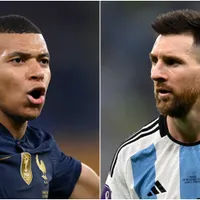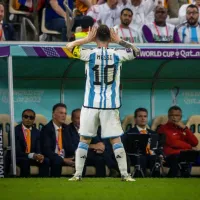The United States has proudly trumpeted its World Cup youth, and rightly so. A bright bunch of young 20-somethings, brimming with talent and fresh of body, ready to be uncorked.
Yes, all that youthful intent and plucky desire is great and all – until it isn’t.
History has taught us, and Saturday’s U.S. result served as a cruel reminder, that experience in the high pressure moments and high level tactical know how certainly count, too.
The Dutch had more of the critical stuff that carries the day at World Cup elimination stage.
A lot more as it turns out, advancing into the tournament quarterfinals with a comprehensive, fairly comfortable 3-1 win over Gregg Berhalter’s United States.
Clinical Dutch
The Dutch team was clinical in the attacking penalty area, generally untroubled in its defending and almost always numerically advantaged in midfield.
As such, Louis van Gaal’s composed bunch never looked seriously stretched against the less experienced Americans, who did have their chances, but who simply couldn’t muster the same degree of composure near goal.
The United States and all its youth can certainly be proud of the steps taken in Qatar. Ahead of its co-host role at the next World Cup, Berhalter’s team had already answered the most pressing question; Yes, it was “good enough,” sufficiently talented and spirited to advance out of group play, which was always the line that defined U.S. success in Qatar.
But once into elimination play, it takes more than “good enough.” And it absolutely means not making elementary mistakes: Allowing uncontested crosses, not tracking runners out of midfield, not marking faithfully near goal and not converting chances inside the opposition 18.
Early opportunities wasted for Pulisic, Weah
The first 10 minutes provided big U.S. hope. Christian Pulisic, playing through pain, would certainly love to have his early chance again, unable to convert one-on-one against Dutch goalkeeper Andries Noppert.
Timothy Weah had the next good U.S. chance (and there weren’t many against Virgil van Dijk and Nathan Ake, the top Dutch defenders Saturday) much later in the first half.
Here again we saw the lack of ruthless intent, that calm determination, that Netherlands attackers demonstrated so ably twice before halftime.
Memphis Depay’s 10th minute goal left the United States team trailing for the first time in Qatar, the Barcelona attacker’s finish culminated a swell passing sequence through midfield.
Also for the first time in Qatar, we saw a bad moment from midfielder Tyler Adams, the eloquent U.S. captain and unquestionably the side’s top player through the tournament.
He was trailing the play, unable to recover from being caught out of position.
He was hardly the only U.S. player making costly mistakes. Twice, left back Antonee Robinson couldn’t prevent Denzel Dumfries crosses that turned into well-taken Dutch goals.
Ferreira and Zimmerman get starts
Sure we can nitpick at Berhalter’s starting choices. But would anything different really have mattered?
Jesus Ferreira’s selection was indeed a surprise. Unused to that point in the World Cup and six weeks past his last kick in a competitive match, he lacked a cutting edge.
Then again, Ferreira was hardly the only one; while he was guilty of being sloppy with the ball at times, so was Tim Ream. Same for Yunus Musah, Robinson and others.
Along the back line, Walker Zimmerman regained his spot ahead of Cameron Carter-Vickers. He was solid and probably the least of the U.S. issues in the back.
Robinson couldn’t prevent either cross from his side that led to the Dutch first half goals. At the other outside back spot, Sergino Dest fell asleep in the worst moment, allowing Daley Blind to ghost into a good shooting spot in front of goal, cruising in for the easy finish on the last kick of the first half.
That was among the moments that demonstrated all that individual naivete. So was Haji Wright’s second half miss, when a terrible Dutch pass put him in on goal – only to take a heavy touch and lose the moment.
He made up somewhat with the 76th minute fortunate touch that turned into his team’s only goal.
Van Gaal wins the tactical battle
Beyond Pulisic’s early chance, the Dutch game plan was on point, arranged to neutralize the best part of the U.S. roster: its highly mobile midfield.
Van Gaal had his team defend with two in front and three along the back line. That put five men in midfield, as those two Dutch forwards funnelled the U.S. right into the heart of a man-for-man midfield blockade.
It reduced the U.S. midfield time on the ball and, therefore, its effectiveness. Center backs Ream and Zimmerman were forced to supply the entry balls.
Speaking of Ream: His scrambling effort from close range was cleared off the line in the second half, one of the only times in four matches in Qatar the United States has managed to be effective on set pieces.
That’s surely of the real disappointments of this entire run. (Pulisic is a great player. Of course, he is. But the United States simply must find someone better for set piece delivery.)
Wright’s goal gave the U.S. brief hope, which was extinguished mercilessly with one more awful U.S. moment. Robinson failed to check his shoulder, not even once in several seconds.
With no pressure on the cross (first mistake) and Dumphries completely unmarked on the back post (second mistake), that was that.
“Positives” will be taken and mistake lamented. But this Pulisic-led group is undeniably talented. Berhalter did well in building a solid esprit de corps.
But the best part of it all: experience gained when the pressure is heaviest in international soccer. We’ll see going forward if they put it to good use.
Photo credit: IMAGO / ANP















